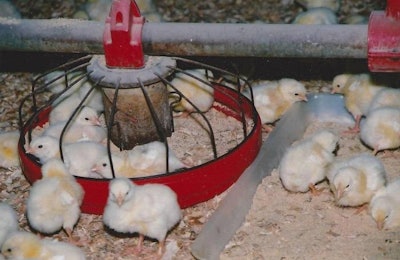
I generally enjoy the Wall Street Journal’s coverage of agriculture and the poultry industry, but I was unpleasantly surprised by some things written in a recent article on the expanding market for “slow-growing” broilers. The second paragraph displays a lack of understanding of economics that surprised me:
“A typical commercial chicken has been bred to grow to twice the size of birds from 50 years ago, in around half the time. The faster pace has meant big savings and fatter profits for the meatpackers that raise them.”
The author misstates the two real beneficiaries of improved bird performance: the consumer of chicken meat and society at large. Because of competition among genetics companies and among poultry companies, profits over time don’t get “fatter;” they stay within acceptable ranges required to attract and retain capital investment.
The cost savings from improved bird performance, due to genetics and all of the husbandry and technological improvements implemented over the past 50 years, have been passed on to the consumer of chicken in the form of reduced inflation-adjusted prices per pound of chicken. Society as a whole has benefited, because less land, grain, water and other resources are required to produce a pound of meat, and these resources are available for other uses, such as growing more birds to feed other consumers or taking environmentally sensitive land out of production. Simply put, the faster-growing broiler is more sustainable than its slower-growing cousin.
The notion that fast-growing breeds are somehow inhumane to raise simply because they grow fast is absurd, but it is a notion that seems to be capturing attention, and it needs to be discredited. The exceptional rates of livability and low condemnation rates the industry attains with today's breed, which are better than they were 50 years ago, is one argument for the health and wellness of modern genetic strains. But, other welfare assessments should be made side by side with slower-growing strains and published.
Ultimately, consumers can choose to purchase whatever type of food they can afford. Now is the time for the poultry industry to address the objections to raising modern strains of broilers: welfare and taste. A niche market for slow-growing broilers will certainly develop in the U.S. just as it has in Europe, but maintaining chicken’s place as the No. 1 meat in the U.S. market will depend on continued innovation and genetic improvement. That means broiler producers need to effectively demonstrate that there isn’t anything inhumane about modern broiler production, and that requires transparency that many poultry companies don’t seem to be comfortable with.
I’ll leave it to the food scientists to address the taste claims, I still can’t tell the difference between air-chilled and water-chilled.


















